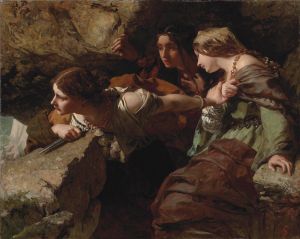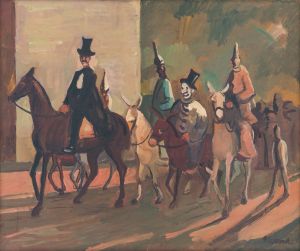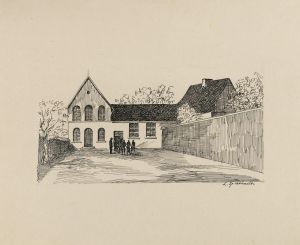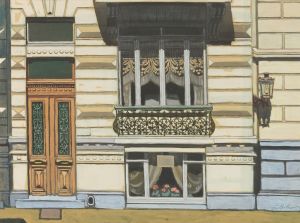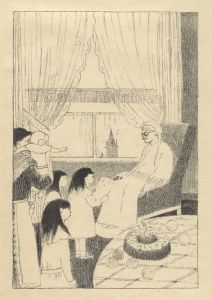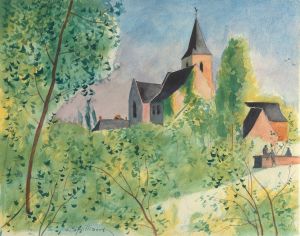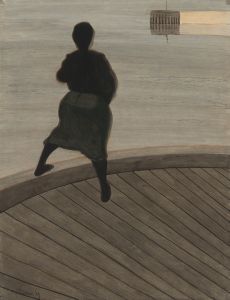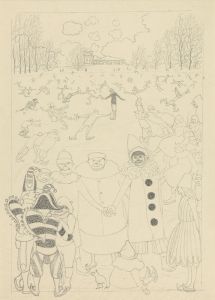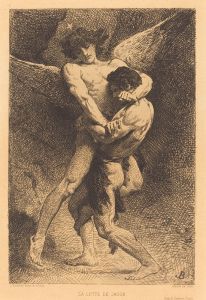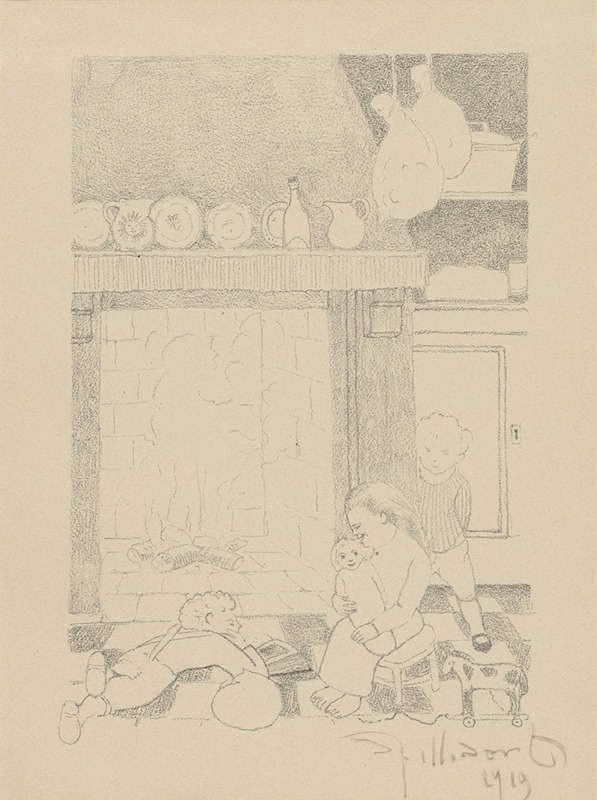
Les enfants pauvres devant l’âtre
A hand-painted replica of Léon Spilliaert’s masterpiece Les enfants pauvres devant l’âtre, meticulously crafted by professional artists to capture the true essence of the original. Each piece is created with museum-quality canvas and rare mineral pigments, carefully painted by experienced artists with delicate brushstrokes and rich, layered colors to perfectly recreate the texture of the original artwork. Unlike machine-printed reproductions, this hand-painted version brings the painting to life, infused with the artist’s emotions and skill in every stroke. Whether for personal collection or home decoration, it instantly elevates the artistic atmosphere of any space.
Léon Spilliaert, a Belgian symbolist painter, is known for his unique and introspective works that often explore themes of solitude, existentialism, and the human condition. One of his lesser-known works, "Les enfants pauvres devant l’âtre" (translated as "The Poor Children in Front of the Hearth"), reflects his characteristic style and thematic concerns.
Spilliaert was born in Ostend, Belgium, in 1881, and his upbringing in this coastal town significantly influenced his artistic vision. The desolate beaches and the ever-changing sea of Ostend often found their way into his art, creating a backdrop for his exploration of mood and atmosphere. Although "Les enfants pauvres devant l’âtre" does not depict the sea, it shares the same introspective quality that Spilliaert is renowned for.
The painting, created in the early 20th century, is a poignant portrayal of poverty and childhood. It captures a moment of quiet introspection, with children gathered around a hearth. Spilliaert's use of muted colors and stark contrasts emphasizes the somber mood of the scene. The children, depicted with a sense of vulnerability and innocence, are central to the composition, drawing the viewer's attention to their plight.
Spilliaert's technique often involved the use of watercolor, gouache, and ink, which allowed him to create works with a dreamlike quality. In "Les enfants pauvres devant l’âtre," his mastery of these mediums is evident in the delicate rendering of light and shadow, which adds depth and emotion to the scene. The hearth, a symbol of warmth and comfort, contrasts with the apparent poverty of the children, highlighting the disparity between their environment and their circumstances.
Throughout his career, Spilliaert was influenced by various artistic movements, including symbolism and expressionism. His work often reflects a synthesis of these styles, characterized by an emphasis on mood and emotion rather than realistic representation. This approach is evident in "Les enfants pauvres devant l’âtre," where the focus is on conveying the emotional reality of the children's situation rather than providing a detailed narrative.
Spilliaert's art was also shaped by his personal experiences and philosophical interests. He was known to be introspective and contemplative, qualities that are mirrored in his work. The themes of isolation and introspection in "Les enfants pauvres devant l’âtre" can be seen as a reflection of Spilliaert's own inner world, as well as a commentary on the broader social issues of his time.
While Spilliaert's work was not widely recognized during his lifetime, he has since gained acclaim for his unique contribution to modern art. His ability to capture the essence of human emotion and experience in his paintings has earned him a place among the notable artists of the early 20th century. "Les enfants pauvres devant l’âtre" is a testament to his skill and vision, offering a glimpse into the lives of those on the margins of society and inviting viewers to reflect on the universal themes of poverty and resilience.
In summary, "Les enfants pauvres devant l’âtre" by Léon Spilliaert is a compelling work that exemplifies the artist's ability to convey deep emotion and social commentary through his distinctive style. The painting remains an important part of Spilliaert's oeuvre, illustrating his enduring interest in the human condition and his skillful use of artistic techniques to evoke mood and meaning.








